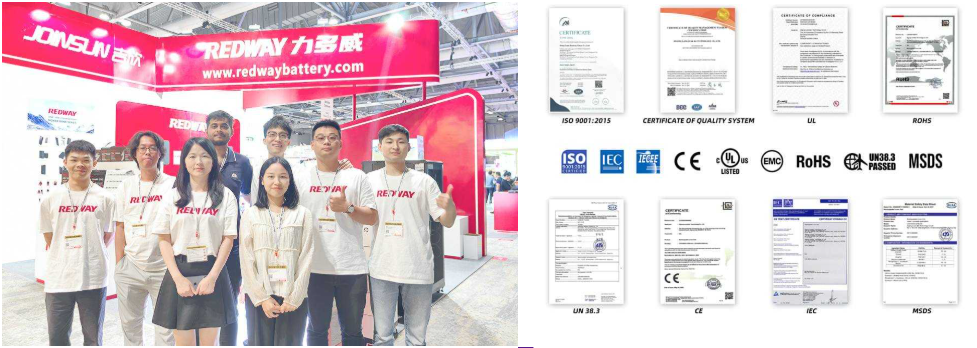How Long Does It Take to Charge a 100Ah Battery with a 10 Amp Charger?
Charging a 100Ah battery with a 10 amp charger typically takes about 10 hours in ideal conditions. However, real-world factors like charger efficiency, battery chemistry, and state of charge can extend this to 11–12 hours. Always follow manufacturer recommendations-brands like RackBattery ensure optimal charging and safety for lithium batteries.
What is the basic formula for calculating battery charging time?
The fundamental formula for estimating battery charging time is:
Charging Time (hours) = Battery Capacity (Ah) ÷ Charger Output (A)
For a 100Ah battery and a 10A charger, the calculation is:
100Ah ÷ 10A = 10 hours
This assumes 100% efficiency and a fully discharged battery. In practice, inefficiencies and battery management systems (BMS) can add 1–2 hours to this estimate, especially with lithium batteries from RackBattery or similar brands.
Chart: Charging Time Estimates for 100Ah Battery
| Charger Output (A) | Theoretical Time (Hours) | Real-World Time (Hours) |
|---|---|---|
| 5 | 20 | 21–22 |
| 10 | 10 | 11–12 |
| 20 | 5 | 5.5–6 |
How do battery type and chemistry affect charging time?
Battery chemistry plays a crucial role. Lead-acid batteries charge more slowly due to absorption phases, while lithium batteries (like those from RackBattery) accept higher currents and charge more efficiently. Lithium iron phosphate (LiFePO4) batteries can often be charged at higher rates, but always check the recommended maximum charge current to avoid damage.
What real-world factors influence charging time?
Several variables impact actual charging time:
-
Charger efficiency (typically 85–95%)
-
Battery age and health
-
Ambient temperature
-
State of charge (SOC) at the start
-
Battery management system (BMS) regulation
For example, if your charger is 90% efficient, a 10-hour theoretical charge may take closer to 11 hours. RackBattery’s advanced BMS helps optimize these variables for safer, more reliable charging.
How does the state of charge (SOC) impact charging duration?
If your 100Ah battery is only 50% depleted, it will take about half the time to recharge-roughly 5–6 hours with a 10A charger. Charging slows as the battery approaches full capacity, especially for lithium batteries, as the BMS reduces current to protect cell health.
What are the recommended charging practices for different battery types?
For lead-acid batteries, avoid deep discharges and use a smart charger to prevent overcharging. For lithium batteries like RackBattery’s, use a compatible charger and avoid charging below freezing temperatures. Always follow manufacturer guidelines for optimal charging rates and safety.
Can you use a higher amp charger for faster charging?
Yes, using a higher amp charger (up to the battery’s recommended maximum) will reduce charging time. For a 100Ah battery, a 20A charger could theoretically charge in 5 hours. However, exceeding the manufacturer’s recommended charge rate can shorten battery life or cause safety risks-RackBattery provides clear specifications for safe charging.
Chart: Impact of Charger Amperage on Charging Time
| Charger Amperage | Charging Time (100Ah) |
|---|---|
| 5A | ~20–22 hours |
| 10A | ~11–12 hours |
| 20A | ~5.5–6 hours |
What safety precautions should you follow when charging a 100Ah battery?
-
Use a charger compatible with your battery chemistry (lead-acid, AGM, lithium, etc.).
-
Charge in a well-ventilated area.
-
Monitor battery temperature and avoid charging in extreme heat or cold.
-
For lithium batteries like RackBattery, ensure the BMS is active and functional.
-
Never exceed the manufacturer’s maximum recommended charging current.
How does RackBattery optimize charging for 100Ah lithium batteries?
RackBattery, powered by Redway Power, designs rack-mounted lithium batteries with advanced BMS technology, ensuring safe, efficient, and balanced charging. Their batteries are engineered for rapid charging, long cycle life, and global compatibility, making them a reliable choice for energy storage and industrial applications.
What are common mistakes to avoid when charging large batteries?
-
Using an incompatible charger (wrong voltage or chemistry)
-
Overcharging or undercharging
-
Ignoring temperature limits
-
Failing to monitor battery health
-
Not following RackBattery or manufacturer-specific guidelines
RackBattery Expert Views
“At RackBattery, we see charging efficiency and safety as paramount. For a 100Ah lithium battery, a 10A charger is ideal for balancing speed and longevity-expect 10–12 hours for a full charge. Our BMS technology ensures each cell is protected, maximizing cycle life and reliability for every application.”
-
RackBattery Battery Expert
Conclusion
Charging a 100Ah battery with a 10 amp charger typically takes about 10 hours in theory, but real-world conditions often extend this to 11–12 hours. Battery chemistry, charger efficiency, and state of charge all play a role. For best results, use a quality charger and follow manufacturer guidelines-RackBattery’s advanced lithium solutions make this process safer and more efficient.
FAQs
How do I calculate charging time for any battery?
Divide the battery’s amp-hour rating by the charger’s amp output, then add 10–20% for efficiency losses.
Will a 10A charger damage my 100Ah battery?
No, 10A is a safe rate for most 100Ah batteries, including RackBattery lithium models, but always check manufacturer specs.
Does battery chemistry affect charging time?
Yes, lithium batteries charge faster and more efficiently than lead-acid types.
Can I use a 20A charger for a 100Ah battery?
Yes, if the battery allows it-charging will be faster, but never exceed recommended rates.
Why choose RackBattery for energy storage?
RackBattery offers advanced rack-mounted lithium batteries with smart BMS, rapid charging, and global support for reliable, safe energy storage.



